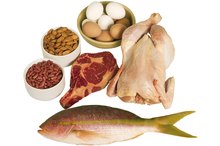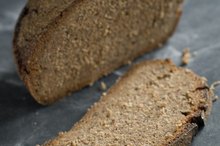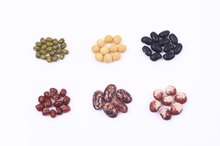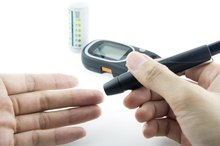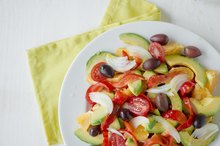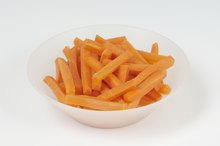List of Food Carb Values
Carbohydrates (carbs) are an important ingredient needed in an everyday diet to build and repair cells, provide energy and maintain blood sugar levels. Many people find they can lose weight on a low-carb diet, however, and look instead for high-protein foods to fill their daily nutritional requirements. Researchers at the Mayo Clinic report that low-carb diets can help to reduce calorie intake. Food with low carbohydrate values is typically higher in fat and protein, which take longer to digest and help dieters feel full longer.
Carb Free
Foods that have negligible carbohydrates and are considered to be carb-free include meat, fish and cheese. Dishes should be fried in butter, baked or broiled to maintain their status as carbohydrate-free because breading, stuffing and flour-based sauces can add unwanted carbs into a dish. Many processed and packaged meat products such as hot dogs, meatloaf and burgers are made with fillers that can pack on the carbs as well.
Low Carb
What Food Group Has the Least Amount of Carbohydrates?
Learn More
Eggs have less than one gram of carbohydrate per egg, making them a very low carbohydrate food. Vegetables are packed with nutrients, and while they do contain carbohydrates, their carb counts are considerably lower than fresh fruits. For example, a medium size carrot only has 8 grams of carbohydrates, while a half-cup of green peas only has 12 grams. Other low carbohydrate vegetables include corn, lima beans and sweet potatoes, which pack only 28 grams of carbs in a large potato.
High Carbs
Fruit, though high in vitamins, has the highest percentage of simple carbohydrates. A half-cup of raisins has about 79 grams of carbohydrates and 10 dried dates carries 61 grams. An apple may have only 21 grams of carbohydrates, but apple juice has closer to 28 grams and applesauce, which usually is made with added sugar, can have as much as 60 grams of carbs in one cup. One orange has 16 grams of carbs, while one cup of orange juice packs about 26 grams. Grains vary greatly in the amount of carbohydrates they contain. One bagel has about 31 grams of carbs, while one biscuit has only about 13 grams. A half-cup of oatmeal has 12 grams of carbs, while a package of instant flavored oatmeal has closer to 25 grams in each serving. Rice is one of the highest high carbohydrate foods with 50 grams of carbohydrates in one cup of both white and brown rice.
Related Articles
References
Resources
Writer Bio
Linda Ray is an award-winning journalist with more than 20 years reporting experience. She's covered business for newspapers and magazines, including the "Greenville News," "Success Magazine" and "American City Business Journals." Ray holds a journalism degree and teaches writing, career development and an FDIC course called "Money Smart."
